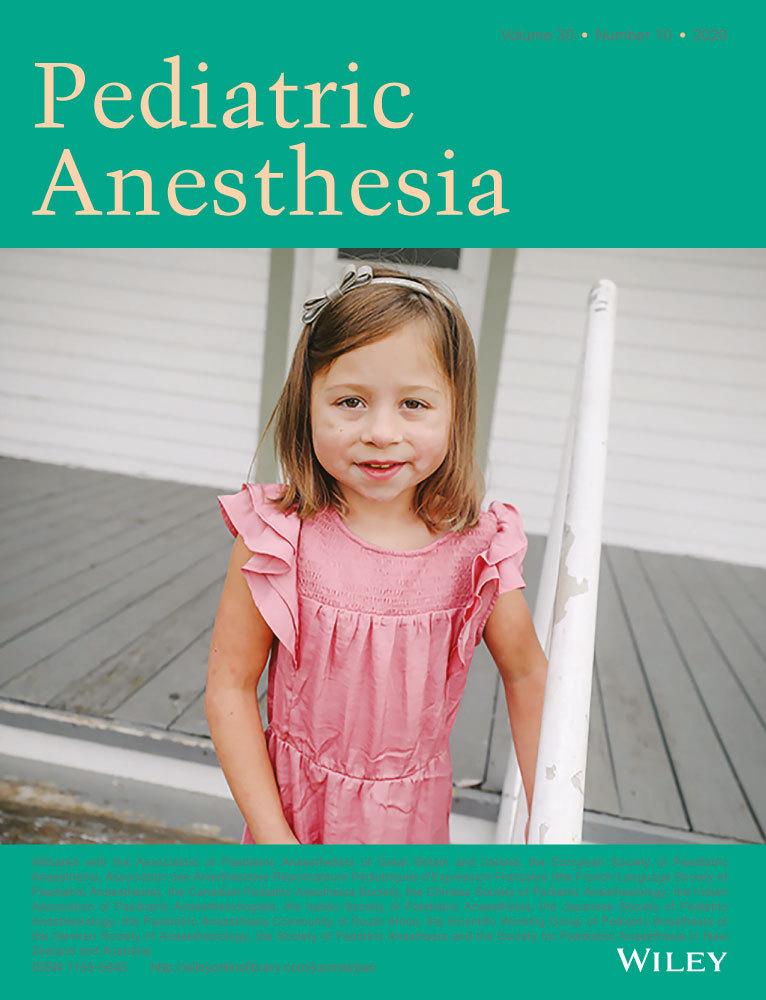Comparison of regional analgesia techniques for pleurodesis pain in pediatric patients
Abstract
Background
Mechanical pleurodesis can prevent recurrence of spontaneous pneumothorax but is associated with significant postoperative pain. Adequate pain control is not only beneficial for patient comfort but also critical for mobilization and pulmonary recovery. Thoracic epidural catheters and paravertebral blocks have been used to alleviate pain after thoracoscopic surgery. However, no studies have evaluated the safety and efficacy of paravertebral block vs epidural analgesia vs no block in children undergoing pleurodesis.
Methods
In this retrospective case series review, data were extracted from a single institution's integrated patient outcome database on children who underwent thoracoscopic pleurodesis from 2013 to 2018. Demographics, operative indication, procedure performed, and perioperative pain management were assessed by chart review. Patients whose operation was converted to thoracotomy, who had an underlying diagnosis of chronic pain, or who underwent pleurodesis for other indications were excluded. The primary outcomes were postoperative pain scores and opioid consumption. Secondary outcomes included psot anesthesia care unit length of stay, hospital length of stay, functional outcomes during recovery, and any adverse events.
Results
66 patients met inclusion criteria: 23 received thoracic epidurals, 34 received paravertebral blocks, and 9 received no epidural/paravertebral block. Patient characteristics did not significantly differ among groups. Although mean pain scores were statistically significantly lower in the epidural group on post-op day 1, all three groups' pain scores were in the 1 to 3 out of 10 range during the entire postoperative period. Thus, this statistical significance had little clinical significance as all groups had good pain control. The epidural group had significantly lower opioid consumption on post-op days 0 - 2 compared to paravertebral block. No adverse events related to epidural or paravertebral block were noted.
Discussion
We present the an analysis of epidural vs paravertebral block (with comparison to no regional analgesia) following pleurodesis in children. Pain is well managed, regardless of the method; however, additional systemic opioid consumption was decreased in the epidural analgesia cohort. Prospective trials and comparisons with other analgesic techniques for pediatric thoracic surgeries are needed.
Conclusions
Thoracic epidural analgesia offers a reduction in opioid use in the first two post-op days after pleurodesis but did not produce a clinically significant reduction in pain scores in comparison with paravertebral block or no block.
CONFLICT OF INTEREST
The chart review protocol for this study was approved by the Boston Children's Hospital Institutional Review Board. The study received no external funding and was supported by existing research resources of the Boston Children's Hospital Department of Anesthesiology, Critical Care and Pain Medicine. The authors have no conflicts of interest to report.




